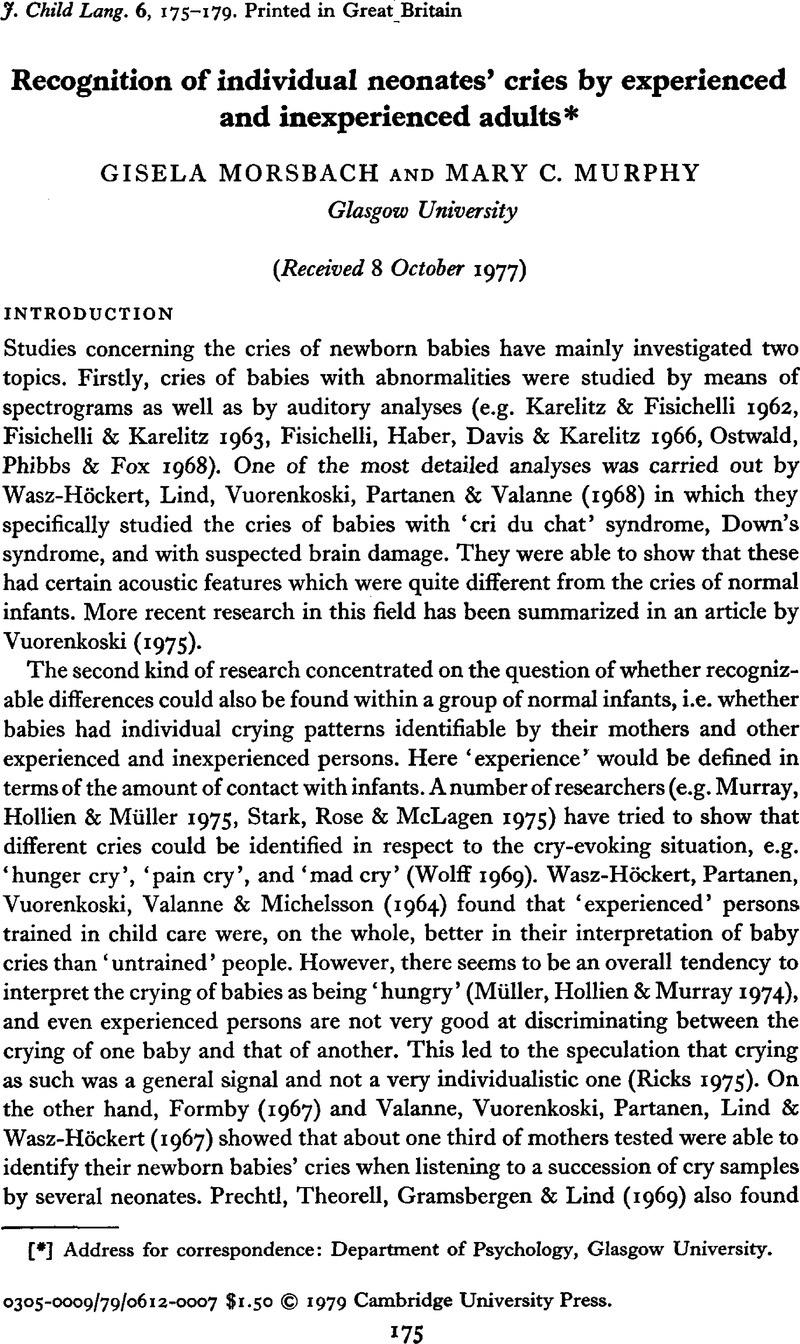Crossref Citations
This article has been cited by the following publications. This list is generated based on data provided by Crossref.
Pratt, Chris
1981.
Communicating with Normal and Retarded Children.
p.
3.
Kaitz, M.
Rokem, A. M.
and
Eidelman, A. I.
1988.
Infants' Face-Recognition by Primiparous and Multiparous Women.
Perceptual and Motor Skills,
Vol. 67,
Issue. 2,
p.
495.
Áine, De Róiste
and
Gwyneth, Bonnet
1995.
Are Multiparous Mothers more Skilled than Primiparous Mothers in Recognising their Newborn?.
The Irish Journal of Psychology,
Vol. 16,
Issue. 1,
p.
29.
Möller, Sebastian
and
Schönweiler, Rainer
1999.
Analysis of infant cries for the early detection of hearing impairment.
Speech Communication,
Vol. 28,
Issue. 3,
p.
175.
Lonstein, Joseph S.
Pereira, Mariana
Morrell, Joan I.
and
Marler, Catherine A.
2015.
Knobil and Neill's Physiology of Reproduction.
p.
2371.
Fuhr, Tanja
Reetz, Henning
and
Wegener, Carla
2019.
Comparison of Supervised-Learning Models and Auditory Discrimination of Infant Cries for the Early Detection of Developmental Disorders / Vergleich von Supervised-Learning Klassifikationsmodellen und menschlicher auditiver Diskriminationsfähigkeit zur Unterscheidung von Säuglingsschreien mit kongenitalen Entwicklungsstörungen.
International Journal of Health Professions,
Vol. 6,
Issue. 1,
p.
2.



